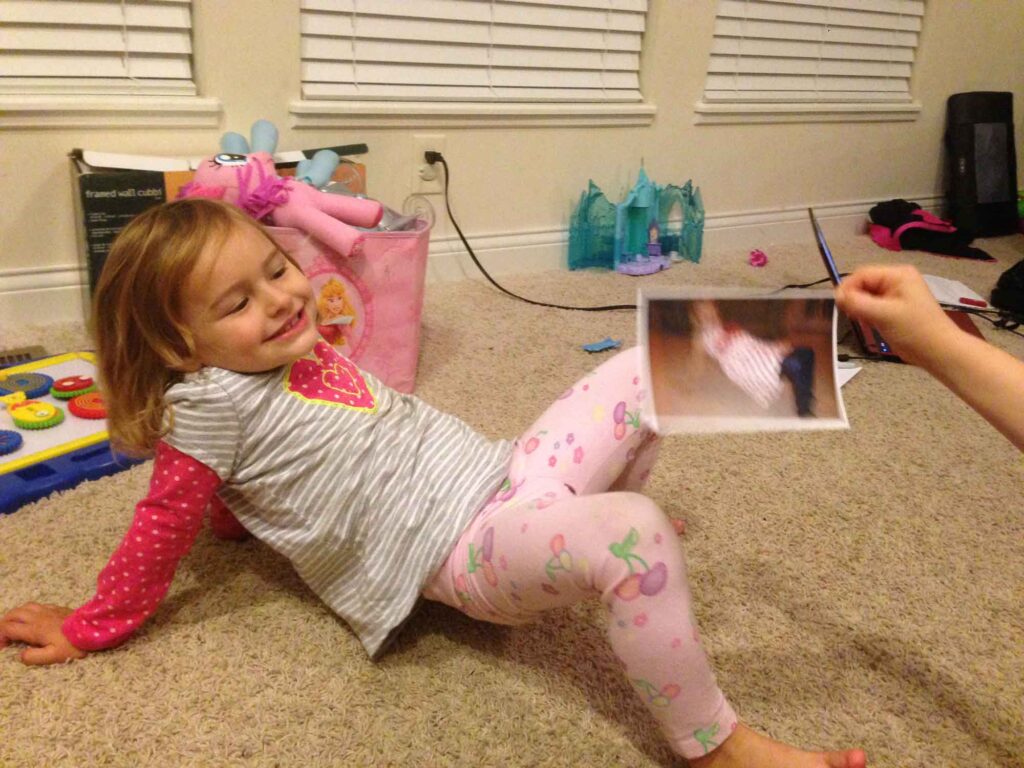October is National Sensory Awareness Month.
October 19, 2015
The sensations we feel every day, we often take for granted. Sight, hearing, taste, smell and touch, we learn about these in school as our five basic senses. But our internal senses, vestibular and proprioceptive, are often not taught growing up.
The vestibular system regulates our balance and movement.
Our proprioceptive system provides us with a sense of where our body is in space based through the muscle and joint feedback we receive.
The vestibular and proprioceptive systems develop in utero at 6 weeks gestation.
We all learn through sensory sensations, and what we feel by touching and moving is how we individually experience the world.
As an Occupational Therapist (OT), I have taken numerous classes and studied for years about our sensory system. I continuously learn new information as I grow as a therapist. At work, I get into the OT mindset where everything is sensory related, but at home things change.
I am a mother of two, 3 and 6 years old, self-diagnosed, sensory seeking daughters. It is a challenge to entertain after a long day at work and school. TV is so much easier to keep their attention when I’m trying to cook dinner or go through backpacks or pack lunches for the next day. But I know they love physically exploring new environments and crave movement. So, I started developing a list of things they can do on their own while I supervise and get the after-school madness back in control. Here are some of our favorite sensory activities:
Outdoor while the weather is warm:
Play on a swing set, slide and climb monkey bars or a climbing wall, jump on a trampoline. My kids like to pretend they are American Ninja Warriors and make up their own obstacle course. Don’t have a gym set? Dollar stores often have cheap toys that kids love such as hula hoops, jump ropes, balls to kick or throw, and crawl through a tunnel. Don’t want to spend money on things? Check out outdoor/indoor.
Outdoor and indoor activities:

How about doing jumping jacks, animal walks (bear crawl, crab walk, kangaroo hops, walk like a seal, penguin, or gallop like a horse), spinning, jumping forward and backwards, skipping, running, wall push-ups, yoga po
ses. Cosmic Kids Yoga on YouTube is one of our favorites. Brain Breaks on GoNoodle.com. Build a fort out of blankets and crawl through. Squeeze and smash with pillows, jump on a pile of pillows on the floor, wrap up in a blanket like a burrito. A way to get the kids to stay on task is to make a game out of it. Taking pictures of them doing the activity, print then pick a card. The kids take turns doing activities 5-10 times.
Indoor activities:
Tactile bins are a great way to keep the hands engaged. We have hundreds of nerve receptors in our palms and fingers. Our tactile sensation helps us understand the world around us by our sense of touch. Making sensory bins for home is fun and they can be filled with all kinds of items like rice, beans, salt, sand, bird seed, grass seed, dry corn, dry oats, shaving cream or water beads. Just make sure kids do not ingest the non-edible materials. Other tactile play may include Play-Doh, Moon Sand, Slime or Putty. See below for recipes and pictures for home-made dough and slime. Musical instruments are also a great way for kids to experience their senses. Holding and making noise provides auditory feedback as well as proprioception when something is struck like a cymbal or xylophone. When hands feel rhythm sticks tapping together, the feeling or vibration can resonates through the hands for up to several minutes after stopping the play.
Here is the basic recipe for Home-Made play-dough:
1 cup salt
2 cups flour
2 cups water
1 tablespoon cream of tartar (find this in the baking section at the grocery store)
2 tablespoons vegetable oil
Make it smell like fall by adding 1 ½ tablespoons of pumpkin pie spice
Make it look like fall by adding yellow, red or a mix of food coloring to make orange.
Directions: Whisk all ingredients into a pan and put it on the stove. Cook on medium heat for a few minutes. It will start out runny but quickly form into a ball. When it gets thick, remove it from the heat and continue to stir. When it is semi-cool, place the ball onto a floured surface and knead the dough. Add another ½ tablespoon of flour and knead until the consistency you want. Store in a Zip-lock bag in the refrigerator to last longer.
Here’s the recipe for Home-Made Slime
4 oz. bottle of Elmer’s white glue or Elmer’s school glue gel
Water
1 teaspoon of Borax (find this in the laundry detergent aisle)
Two bowls
Food coloring or glitter (optional)
Directions:
- In one bowl, mix 4 oz. of glue and 4 oz. of water. Add red, yellow or a combo to make orange of food coloring and glitter
- In the other bowl mix 1 teaspoon of Borax with 1 cup of warm water until the detergent is dissolved.
- Add the glue mixture to the borax solution, stirring slowly.
The slime will begin to form immediately into a ball. Use your hands to pull it out and finish kneading it until it gets less sticky. Dump out the excess water.
Have fun letting your kids help measure and mix the ingredients. I hope you enjoy these activities.
-Leslie Murdock, M. S., OTR/L